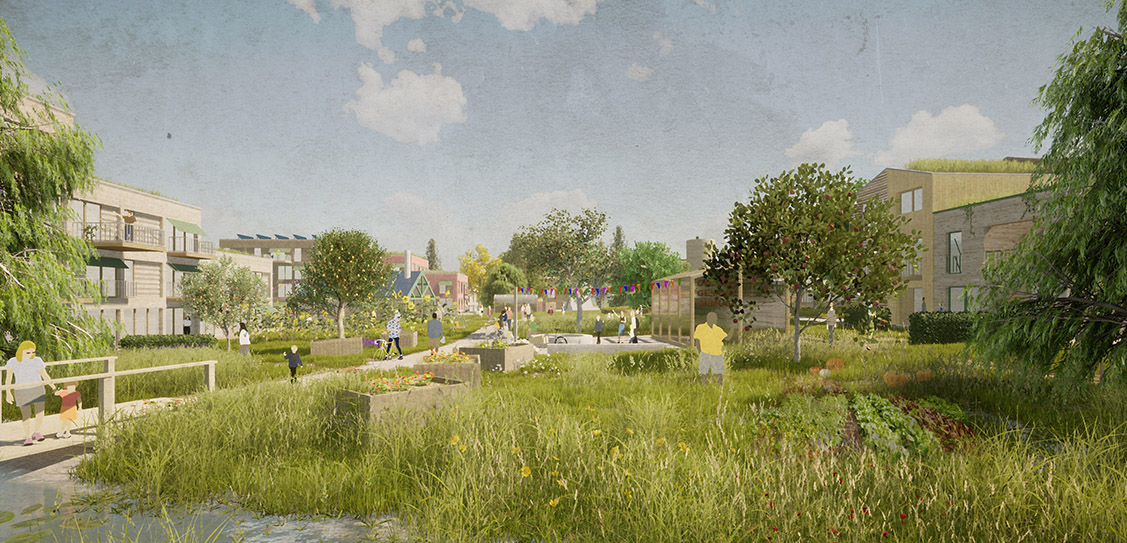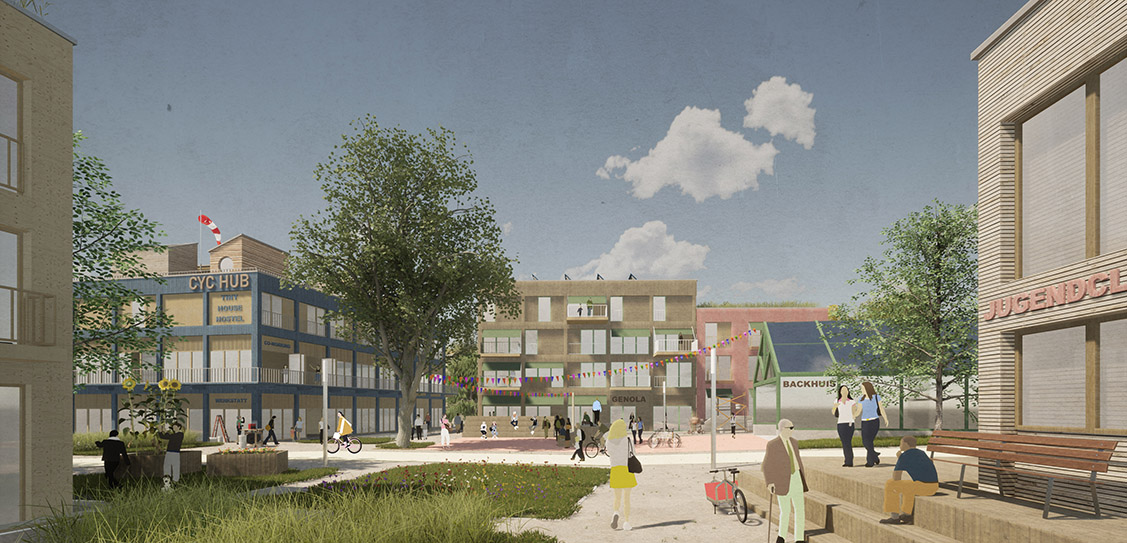Ecovillage will comprise around 500 housing units, which are to be built on around five hectares of land, with completion foreseen by 2026.
The nucleus of the urban design is the lively village square. The CYC hub, which provides space for the energy plant, workshops, the building material exchange, seminar rooms, and the guest house, acts as the interface between the public and the cooperative's sphere. The centre is surrounded and framed by the commons. This is the green heart of ecovillage; where water is being managed, food is being produced and the spirit of community is being lived.
One of the drivers for the development was the ambition to become a CO² neutral settlement. The operation of the ecovillage is planned to be entirely CO² neutral, and CO² emissions should also be reduced to a minimum during construction. Everything is built from wood, and the sealing of the surfaces is being minimized as well. Biodiversity is promoted and gray- and rainwater are treated and cleaned with the help of a plant-based sewage treatment system. After being directed into a biotope-like lake, it seeps away and evaporates, or serves the residents to water their gardens.
At ecovillage, our primary goal was to use all the unused possibilities of urban development, and to set new standards. For example, to think of the city as an interlocking system and as a cycle, and to treat themes like mobility, sustainability, and materials as parts of a whole. So it was not about being less bad, but simply about being the best we can.
Oliver Seidel, Founding Partner, CityförsterThe mobility concept also sets high goals with regard to future viability: it focuses entirely on local mobility; local public transport, as well as pedestrian and bike path traffic. In concrete terms, this means only 0.2 parking spaces per residential unit are provided. In return, however, there are generous areas for bicycles, rental stations, handcarts, etc. A direct connection to the light rail system rounds off this concept.
The neighbourhoods, which are connected to each other and to the centre by the commons, consist of differently sized clusters. These clusters comprise various building typologies, which in turn provide space for a wide range of apartment forms. This 'democratic' housing mix promotes social integration and creates strong neighbourhoods.


